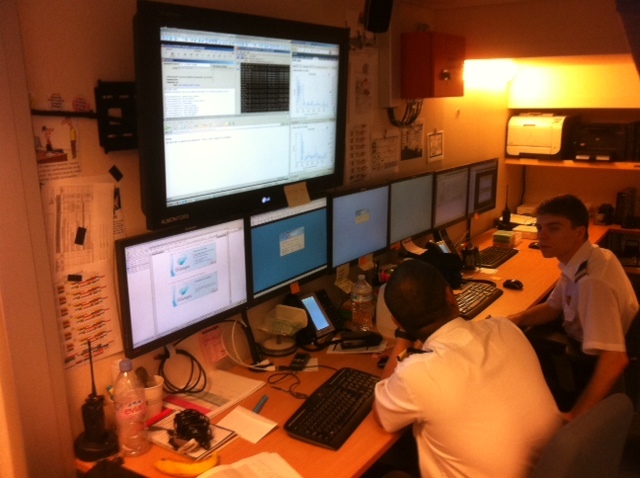 All information technology (IT) at Royal Caribbean Cruises and its brands falls under Bill Martin, CIO, who has the daunting task of overseeing shipboard IT infrastructure along with shoreside systems, websites, agent systems and more.
All information technology (IT) at Royal Caribbean Cruises and its brands falls under Bill Martin, CIO, who has the daunting task of overseeing shipboard IT infrastructure along with shoreside systems, websites, agent systems and more.
The latest ships, including the Oasis and Solstice classes, and the two Project Sunshine newbuilds, run on a fiber optic network for TV, data and voice.
That has been upgraded, said Martin, from the days of multiple networks using copper wires, also saving a notable amount of weight.
“We have dual data centers,” he added, talking about the Oasis and Solstice vessels, “with a backup data center housing the mission-critical applications that need to survive in an emergency. They are located in separate fire zones.
“A very high percentage of our servers are virtualized,” Martin explained, meaning software that divides one physical server into different environments to become more efficient.
While he constantly has his eye on technology change, the ship systems are hotel and back office systems, and its consumer technology that changes quickly.
Passengers with mobile devices are eating bandwidth, which cruise lines have to manage carefully.
Managing bandwidth includes compressing packets and optimization, including caching and also eliminating certain websites, such as streaming video portals.
The company has gone as far as making sure emails going through the ship’s servers actually need to go back to headquarters in Miami. If those emails are between shipboard employees, they stay on the ship and don’t utilize precious bandwidth.
“But you have to have bandwidth, that is the bottom line,” Martin noted.
And what most passengers don’t understand is that data travels close to 100,000 miles every time they request a website or want to check their email. It starts at the ship with a request that eventually travels to satellites thousands of miles up, and back, using ground stations in between, and being delivered in roughly 750 milliseconds.
Bandwidth is not the biggest challenge staring down Martin, but rather all the application systems onboard.
More systems are going on the ships and “you have to get creative with how you integrate them,” he explained, meaning an integration hub, so systems can talk to each other.
Photo recognition does not just happen with security, but now with the ticket system, e-mustering, point-of-sale, and more, totaling about a dozen places that the cruise line needs a guest’s photo to pop up.
Not usually covered in drydockings are changes happening in the IT infrastructure onboard.
Old copper networks can’t be replaced, but they can be beefed up, as Royal adds ship-wide wireless internet and interactive TVs.
New ships are not only larger from a tonnage standpoint, they also have more systems than before.
Martin said there were some 20 new application systems introduced on the Oasis, highlighted by the food outlet traffic flow system, which utilizes shape recognition cameras to keep count of passengers in the restaurants.
“That’s shared across the network to digital signs around the ship to let people know where the availability is,” he said.
Excerpt from Cruise Industry News Quarterly Magazine: Summer 2012




